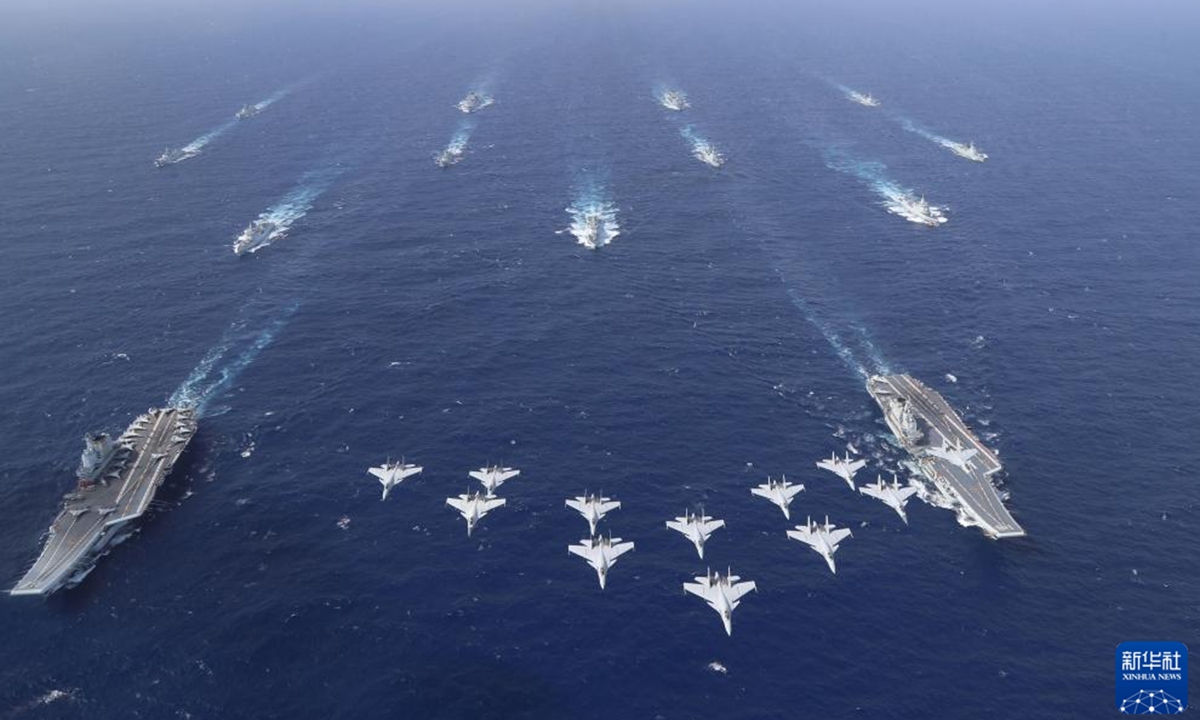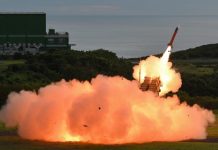China’s Shandong aircraft carrier has successfully expanded its operational capacity in 2024, achieving “all-weather” combat readiness, alongside cutting down the time needed to deploy jets, according to Chinese media reports.
The Shandong, China’s first domestically built and conventionally powered aircraft carrier, was launched in 2017 and formally commissioned in December 2019.
In 2024, the aircraft carrier has achieved major advancements and has apparently seen a swift evolution in its capabilities since its early stages. This progress includes transitioning from individual ship training to fleet exercises and advancing from nearshore drills to long-range missions.
Chinese state media Xinhua reported that it has consistently set new records for the highest number of consecutive aircraft takeoffs and landings.
The Shandong aircraft carrier recently concluded its final maritime training mission for 2024, having spent much of the last year improving its operational effectiveness.

Media reports revealed that the Shandong has dramatically reduced aircraft launch preparation times compared to its earlier days.
The carrier has also augmented its ability to execute consecutive sorties and is now capable of conducting operations around the clock in all weather conditions, even in complex and adverse environments.
These advancements mark a crucial leap in the ship’s readiness and its capacity to operate as a formidable asset for the People’s Liberation Army (PLA) Navy.
The news regarding Shandong’s increased activity aligns with a recent report from the EurAsian Times, which revealed that the aircraft carrier became more active during the Liaoning’s refurbishment, which took place between February 2023 and February 2024.
The latest report also praised the carrier’s crew for their contributions to the ship’s success. Over the past year, the Shandong’s sailors worked closely with researchers to address over 100 operational challenges, contributing to several technical breakthroughs.
The advancement has been driven by cross-specialty training, which has created a diverse group of sailors skilled in multi-role positions, encompassing elite leadership, technical expertise, and logistical proficiency.
Achievements Of China’s Aircraft Carrier Fleet In 2024
Aircraft carriers serve as crucial strategic assets for China to allow the country to protect its national sovereignty, security, territorial integrity, and developmental interests.
In 2024, all three aircraft carriers of the Chinese People’s Liberation Army (PLA) Navy reached several key milestones in enhancing their operational capabilities. The Pentagon’s China Military Power Report, released in December 2024, also acknowledged the progress, particularly toward blue-water capabilities.
Two key milestones in China’s aircraft carrier program in 2024 were the commencement of sea trials for the PLA Navy’s third carrier, the Fujian, and the first-ever dual-carrier group exercise.
The Fujian embarked on its maiden sea trials from the Shanghai Jiangnan Shipyard on May 1, returning on May 8 after an eight-day journey. Following this initial trial, Fujian has conducted several more sea trials.
Another key event in 2024 was the dual-carrier formation exercise, during which Liaoning and Shandong conducted their inaugural joint exercise in the South China Sea.

This exercise demonstrated the enhanced capabilities of a dual-carrier group, which is not merely the combination of two carrier groups but a force capable of undertaking more complex and diverse missions.
In such a formation, the carriers can share defense and reconnaissance assets, with each ship focusing on specific roles. For example, one carrier might concentrate on land strikes, while the other focuses on air defense and maintaining air superiority.
The PLA also conducted the “Joint Sword-2024B” drills on October 14, during which the Liaoning aircraft carrier group participated alongside the army, navy, air force, and rocket force, conducting exercises focused on vessel-aircraft coordination, joint air control, and strikes on sea and land targets in waters and airspace to the east of Taiwan.
On the other hand, Shandong has advanced from conducting coastal operations to undertaking long-distance sea missions and has shifted from structural system-based training to joint-force exercises, utilizing the open ocean as its primary training area.
The Pentagon’s China Military Power Report also pointed out that the increased training with the Shandong highlights the PLA’s expanding ability to operate farther from China’s borders, especially in the Philippine Sea.
- Contact the author at ashishmichel(at)gmail.com
- Follow EurAsian Times on Google News




